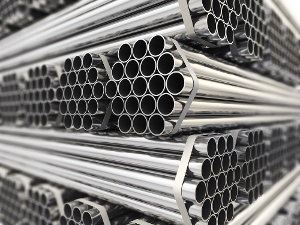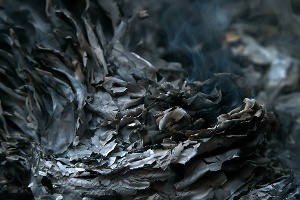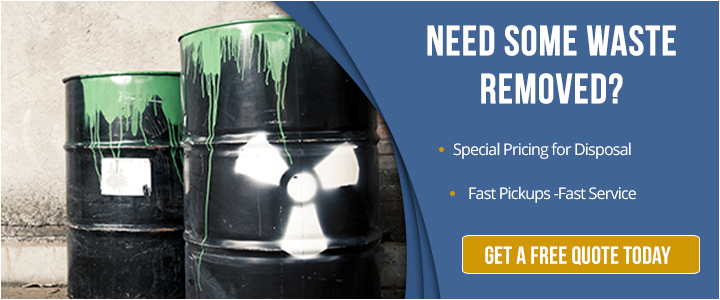The definition of non-hazardous waste is any waste that causes no harm to human or environmental health. Also referred to as non-RCRA hazardous waste, this type of waste is not classified as hazardous waste, but may still be subject to certain management requirements.
In the industrial sector, non-hazardous waste is often generated during the production of goods and services. Yet while the non-hazardous waste definition sounds non-menacing, not giving this type of waste the attention it needs can be harmful to the environment and your business.
Not only does some non-hazardous waste fall under regulatory requirements, but knowing what is hazardous vs. non-hazardous can be confusing. That’s because while one state may designate a type of waste as non-hazardous, another may have laws that state it is hazardous.
Perhaps the biggest reason for understanding what is non-hazardous waste vs hazardous waste, are the potential savings you can make by having your waste streams reclassified as non-hazardous. More on this later
Here’s what you need to know about what makes a waste non-hazardous, common types of non-hazardous waste and how to properly dispose of it according to the law.
What Is Non-Hazardous Waste?
The U.S. Environmental Protection Agency (EPA) defines non- hazardous industrial waste as “waste generated from processes associated with the production of goods and products, such as electric power generation and manufacturing of materials such as pulp and paper, iron and steel, glass and concrete.”
hazardous industrial waste as “waste generated from processes associated with the production of goods and products, such as electric power generation and manufacturing of materials such as pulp and paper, iron and steel, glass and concrete.”
The vast majority of waste produced in the United States is considered non-hazardous and does not pose an immediate threat to the environment.
In contrast, hazardous waste poses an immediate threat to humans, the environment and the community as a whole. The EPA classifies hazardous materials as having at least one of four characteristics:
- Ignitability
- Corrosivity
- Reactivity
- Toxicity
It is important to note that certain amounts of hazardous waste that meet the definition above can be re-classified as excluded materials and considered for non-hazardous waste disposal. We’ll dive into that option below.
Types Of Non-Hazardous Waste
Industrial manufacturers often generate several types of non- hazardous waste. Examples of industrial waste are ash, sludges, antifreeze, grinding dust and liquids contaminated with non-hazardous chemicals.
hazardous waste. Examples of industrial waste are ash, sludges, antifreeze, grinding dust and liquids contaminated with non-hazardous chemicals.
Medical facilities are another common industry that generates non-hazardous waste, with some of the most frequent examples of medical waste including plastic packaging, clean glass and plastic, paper and cardboard, and aerosol cans that are completely depleted.
As we discussed above, some types of waste may hold a different classification based on where you’re located. This can pose a difficult situation for businesses since they may think they are responsibly disposing of the waste, when in fact they are violating state laws.
An example of this is electronic waste. There are no federal laws that dictate the recycling of electronics. However, nearly half of the states in America have put into place electronics recycling laws, including California.
Yet there are some components of e-waste that are not hazardous waste. Confused? You’re not alone. Common examples of electronic waste that are hazardous are computer monitors and towers, printers, lamps and hospital equipment. Parts of this electronic equipment that are not hazardous include:
- Zinc plating often found in steel production parts
- Aluminum often found in electronic goods
- Copper and gold, regularly used in computer parts
- Plastic and glass components found in electronics
Another example of non-hazardous waste laws that vary includes asbestos. While in some states asbestos is not considered a hazardous waste, in California, it is considered hazardous.
However, only asbestos waste weighing more than 50 pounds in total requires transportation by a certified hazardous waste disposal company.
Below we’ll talk about why it’s critical have an experienced waste disposal company in your corner and how to find one in your area.
Non-Hazardous Waste Collection And Disposal
Whether you generate non-hazardous or hazardous waste, proper disposal is essential.
proper disposal is essential.
Waste Identification
The best waste disposal companies will first help you identify your waste. While certain types of non-hazardous waste are easy to identify, other types like medical waste or chemical waste may be more difficult to distinguish as being non-hazardous versus hazardous.
A reputable disposal company will identify wastes through sampling and testing. A disposal company will then certify the waste as non-hazardous, ensuring you don’t run into any trouble with authorities during the disposal process.
Reclassifying Your Waste Streams
Correctly identifying your waste streams can provide you with the possibility of achieving significant cost savings in the disposal process. As we previously mentioned, a reputable disposal company can identify specific waste streams via sampling and testing before they are shipped to a Treatment, Storage and Disposal Facility (TSDF).
This process of identification not only can help educate your staff on how to properly classify waste streams but quite often it can result in a significant reduction in disposal costs.
Once a TSDF has evaluated a substance, the facility can declare it appropriate for recycling and certify that it qualifies under the excluded recyclable materials exception.
Proper Disposal
Companies that generate non-hazardous waste may simply be able to take it to a TSDF or landfill. However, some disposal companies only accept certain types and quantities of waste.
Some facilities also require that a disposal company transfer large amounts of waste from your facility to the landfill. If you have bulk amounts of waste, you may have to contact a disposal company for transfer.
Although hazardous waste typically has more stringent disposal requirements than non-hazardous waste, you may still face a number of headaches trying to organize which waste must go to which TSDF. That’s where a professional disposal company can step in and help, allowing you to focus on your business while the waste transportation partner takes care of your waste collection and disposal.
How To Find A Non-Hazardous Waste Disposal Company
Before you begin your search, it’s important to find a vendor that aligns with the type of waste you produce. While you may know that you generate non-hazardous waste, there are many types of non-hazardous waste, as we have shown above. You may also have a mixed stream of waste, some hazardous, some non-hazardous.
Reaching out to other companies like yours that generate similar waste streams can help yield some possibilities in waste management partners.
If you generate hazardous waste as well, it’s important to ensure the company you are considering is registered using the California Department of Toxic Substances Control’s Registered Hazardous Waste Transporter Database. You can search by either “active transporters by city” or “active transporters by county.” You can also search by zip code if you’re looking for a company in a particular area.
This database provides information about when the transporter’s registration expires, its registration number and its location. Even if you don’t generate hazardous waste, this database will provide the names of several waste transporters in your area, some of which likely transport non-hazardous waste as well.


Comment